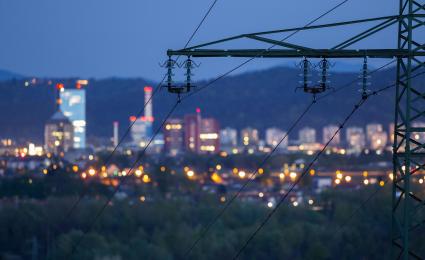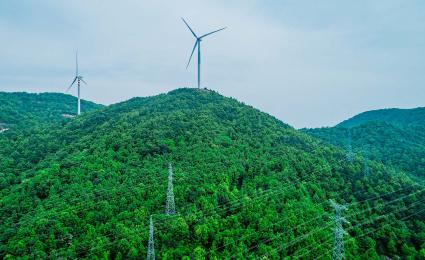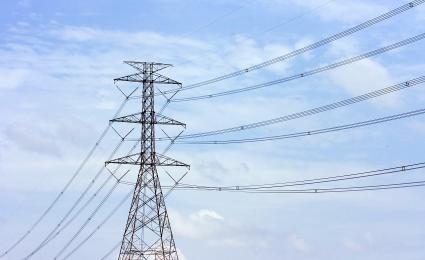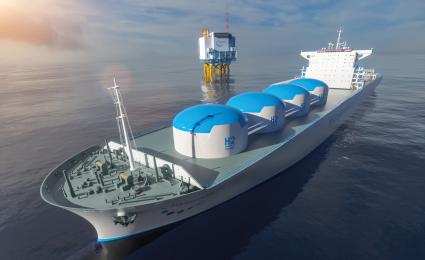Energy storage is set to experience a growth spurt over the coming years. But fundamental questions remain for developers, utilities, suppliers and investors.


How digital asset management can transform energy grids
Digitization is vital in making energy grids greener, safer and more efficient. But integration must be holistic
Transitioning to a sustainable global energy system that is simultaneously reliable, flexible, and secure is one of the biggest challenges of our time. Digitization has an important role to play in making the most of existing infrastructure, but it must be integrated holistically to avoid unnecessary costs.

Around the world, many large countries have committed to becoming climate neutral by the middle of this century. More and more governments will soon follow their lead. But achieving this will require huge efforts across every sector.
Alongside industry and transportation, electricity and heat generation are among the largest emitters of CO2. Shifting them away from fossil fuels, particularly coal, which is the backbone of electricity generation in many countries, is an essential step. New gas-fired power plants are built to complement renewables to stabilize the dispatchable power generation capacity. These emit less CO2 than coal-fired plants and can also be fueled by hydrogen or ammonium.
According to the 2021 Renewable Capacity Highlights report from the International Renewable Energy Agency (IRENA), renewable generation capacity increased by 261 GW in 2020 (+10.3%), accounting for 82% of total net capacity additions. Within renewables, new wind and solar power plants accounted for 91% of new capacity in 2020. This trend is expected to continue around the globe, while new technologies such as hydrogen will play an essential role in the storage of fluctuating renewables.
Three main challenges for grid operators
Within Europe, transmission and distribution system operators are being strongly affected by the growth dynamics of the energy transition.
This results in three main strategic challenges:
- Insufficient network capacities
In some cases, the demand for new connections significantly exceeds the capacities of transmission and distribution system operators. This leads to longer waiting times and increased bottlenecks in the grid. - Uncertainty in future energy solutions and regulations
In addition to the current wave of renewables, new solutions such as hydrogen or changing CO2 regulations will require integration in the future. However, grid operators face uncertainty on the exact timing, locations and extent of the shift in demand as well as the regulatory framework. - Limited financial headroom
With “single-A rating” expected to be a requirement for regulated businesses, cost efficiency will be important in ensuring sustainable financing – all while maintaining grid reliability and safety.
"Digitization is an important part of making better and more complete use of existing networks and avoiding unnecessary grid expansions."
Key characteristics for future energy grids
Until recently, it was enough for operators to run a grid reliably, safely and at a low cost. But now additional factors are becoming increasingly important.
Security from threats and attacks, both virtual and physical, from outside and inside. Fencing and securing are becoming more and more important and leading to further investment.
Resilience requires professional crisis management to handle major disruptions. Damage prevention, improvement of recovery speed and survival chances in case of damage are the main issues. In the event of damage, the supply of materials and services must be fast and flexible , as is currently the case in regions affected by events like floods and fires.
Flexibility is crucial given the challenges associated with integrating decentralized energy systems such as fluctuating renewables, controllable loads like e-vehicles or air conditioning systems, and storage. Improving the performance and capacity of grids depends not only on reinforcing them with primary components such as cables, switches and transformers, but increasingly on the knowledge of local loads and real-time data.
Sustainability means grid operators must support their customers in achieving renewable energy and decarbonization targets. They must also install CO2-neutral materials in the future, including cables, and reduce their own footprint of operations. Topics such as CO2 footprints in manufacturing and resource conservation through recycling will become increasingly important for component manufacturers.
Digital asset management: eyes and ears where it counts
Digitization is an important part of making better and more complete use of existing networks and avoiding unnecessary grid expansions. A digital asset manager has eyes and ears in crucial places in the network and uses data to make informed choices when steering the network.
Digital asset management consists of four crucial components.
- Asset data management: An up-to-date digital twin of the network's assets, its specifications and current state, based on uniform definitions and available where needed throughout the organization.
- Investment planning: Semi-automated project portfolio optimization, based on different scenarios depending on risk profile and ambition.
- Grid capacity management: Real-time monitoring and semi-automated steering of the grid to drive efficient grid use and identify and resolve bottlenecks.
- Asset performance management: Plan ahead and semi-automate repair-or-replace decisions based on business rules.
Adding a digital twin and digital intelligence requires the digitization of physical assets. The rise of decentralized renewable power generation has led to a major increase in local congestion points and, consequently, required data points. Likewise, more local and real-time steering of the network to prevent or counter congestion requires the remote control of technical cabins and substations.
Why only a holistic approach will succeed
The deployment of digital asset management is a vast endeavor that touches the entire organization of any energy grid operator. It is crucial to adopt a focused, step-by-step approach, starting with a company's asset management strategy. Consider the following three questions:
- What are the ambitions for both traditional and new grid-management KPIs?
- What are the main strategic workstreams for reaching these ambitions?
- How should the grid operator get organized and enable change?
Digitization is a means to achieving strategic goals and should be used as such, with clear scope, timing, budget and expected contributions. If not, digitization efforts will merely be drawn to the most visible areas, be they technologies or stakeholders, and costs can quickly spiral out of control.
What’s more, even if they are well focused, structured and embedded in a clear asset management strategy, digitization efforts need a fertile breeding ground. It is vital to invest in a digital mindset and culture among employees. Only a holistic approach can provide the right results for all parties.
Sign up for our newsletter and get regular insights on newest publications related to Energy & Utilities.







